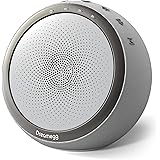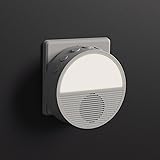The OneTigris Obsidian Insulated Sleeping Pad: A Deep Dive into Its Performance & Value
Seeking an insulated sleeping pad that promises exceptional warmth and comfort without breaking the bank? Many outdoor enthusiasts are on a perpetual quest for gear that balances performance with affordability. The OneTigris Obsidian Insulated Sleeping Pad emerged as a potential contender, seemingly offering a budget-friendly alternative to premium options like the Therm-a-Rest X-Therm. In the accompanying video, an in-depth review of this promising pad is presented, detailing extensive field testing and candid opinions. This comprehensive guide aims to further explore the OneTigris Obsidian, expanding on the insights shared and providing a detailed analysis of its specifications, perceived advantages, and critical shortcomings, ensuring you possess all the necessary information before considering a purchase.
The Elusive Search for a Budget-Friendly Insulated Sleeping Pad
For those who venture into the backcountry, a reliable insulated sleeping pad is often considered a cornerstone of a successful trip, especially when dealing with cool or cold conditions. Premium pads, such as the widely lauded Therm-a-Rest X-Therm, have long been recognized for their superior insulation, comfort, and lightweight design. However, the significant investment required for such high-end gear can often deter budget-conscious adventurers. It is in this context that products like the OneTigris Obsidian Insulated Sleeping Pad attract considerable attention; on paper, it often appears to bridge the gap, offering similar specifications at a fraction of the cost.
The allure of an R-value of 5.2, coupled with a reasonable price tag of approximately $80, immediately positions the OneTigris Obsidian as a strong candidate for many hikers and campers. Expectations were understandably high, given its claimed technology and impressive specs. Despite these promising initial impressions, the true test of any outdoor gear is its performance in real-world conditions. Extensive testing, spanning roughly 12 nights across various temperatures, was undertaken to meticulously evaluate this pad’s capabilities and determine whether it could genuinely stand as a viable budget alternative.
OneTigris Obsidian Specifications: What’s on Paper?
Before delving into the practical performance, it is beneficial to establish a clear understanding of the OneTigris Obsidian’s reported technical specifications. This insulated sleeping pad is constructed with a 20 denier nylon outer shell, a material generally chosen for its balance of durability and lightweight properties. Internally, multiple layers of aluminum foil are integrated, serving as the primary mechanism for heat reflection, which is crucial for achieving its stated R-value.
According to OneTigris, the pad boasts an R-value of 5.2, a rating that suggests suitability for use in cold conditions, potentially down to single-digit Fahrenheit temperatures. The weight of the pad is listed at 2 pounds, which is considered respectable for its substantial dimensions. When inflated, it measures 74.4 inches long, 24.8 inches wide, and an impressive 3.1 inches thick, providing ample space for most users. When stored, it compresses down to 11 inches by 5.1 inches, a relatively compact size for such a thick pad. The pad is offered in a single dark gray color and includes a compression strap, an air sack for easier inflation, and a small repair kit. Curiously, an official weight limit for the pad is not provided by the company; however, testing by an individual weighing 180 pounds did not reveal any immediate structural issues related to personal weight.
The Inflation Challenge: A Workout in Itself
One of the initial hurdles encountered with the OneTigris Obsidian is its inflation process. Given its considerable size – being notably wide, long, and thick – a significant volume of air is required to fully inflate the pad. If inflation is attempted by breath, a common method for many backpackers, users should prepare for a strenuous task. During testing, it was observed that achieving a sufficient level of firmness required approximately 40 to 45 forceful breaths, a process that invariably leads to lightheadedness and necessitates frequent breaks.
While an air sack is included with the pad, which is a thoughtful addition designed to simplify inflation, even its use demands a fair amount of effort. The sheer air volume capacity of the Obsidian ensures that a quick or effortless inflation is rarely achieved. For optimal convenience and to conserve energy, particularly after a long day of hiking, it is strongly recommended that a compact air pump, such as the FlexTail Zero, be considered. This accessory can significantly mitigate the physical exertion otherwise required, allowing for a more efficient setup at camp.
The Pros: Glimmers of Potential in the Obsidian
Despite the notable drawbacks that ultimately diminish its overall recommendation, the OneTigris Obsidian Insulated Sleeping Pad does present several commendable attributes. These positive aspects often fuel the initial enthusiasm for the product, illustrating why it might appear so promising on paper.
-
Manageable Weight for Its Size: At 2 pounds, the Obsidian is not considered ultra-light, especially when compared to its high-end competitors. However, for a pad of its substantial dimensions (74.4″L x 24.8″W x 3.1″T), this weight is actually quite reasonable. This makes it an acceptable consideration for backpackers who prioritize space and thickness over absolute minimal weight.
-
Impressive Packed Size: For a pad that offers such generous inflated dimensions, its stored size of 11 inches by 5.1 inches is remarkably compact. The ability to compress it down effectively ensures that it does not consume an excessive amount of space within a backpack, a significant advantage for those with limited gear capacity.
-
Quiet Operation: One common complaint with many sleeping pads, including some high-performance models, is the noise generated when a user shifts position. The Obsidian, conversely, exhibits minimal noise during use. Tossing and turning on this pad is not accompanied by disruptive crinkling or squeaking sounds, allowing for a more peaceful night’s sleep, which is often a highly valued characteristic.
-
Robust Build Quality and Materials: The construction of the OneTigris Obsidian is notably well-executed. The 20 denier nylon outer shell provides a durable exterior, and the internal aluminum layers are designed for thermal efficiency. This selection of materials suggests a commitment to quality that is often found in more expensive pads. There were no observed issues concerning manufacturing defects or material integrity during extensive testing, reinforcing confidence in its physical construction.
-
Included Air Sack: The inclusion of an air sack for inflation is a practical benefit. While inflating the large pad still requires effort even with the sack, its presence acknowledges the challenge of manual inflation and offers a tool to make the process more manageable, especially for those who do not carry a separate pump.
Collectively, these positive characteristics suggest that OneTigris has invested in certain aspects of the Obsidian’s design and manufacturing. However, as is often the case with outdoor gear, the overall experience is dictated by a synergy of features, where even strong pros can be overshadowed by critical cons.
The Major Letdowns: Where the Obsidian Falls Critically Short
While the OneTigris Obsidian shows promise in its construction and size, its fundamental purpose as an insulated sleeping pad is unfortunately undermined by significant performance issues. The primary cons are so impactful that they overshadow the pad’s positive attributes, leading to a strong non-recommendation.
Unacceptable Comfort Levels
Perhaps the most critical flaw of the OneTigris Obsidian is its pervasive lack of comfort. Despite its generous 3.1-inch thickness, the pad simply fails to provide adequate structural support, leading to a sensation of “bottoming out.” When lying flat on one’s back, a temporary sense of support may be achieved; however, any significant movement, such as turning onto one’s side, results in direct contact with the ground. It is as if the internal baffling system is insufficient to distribute weight effectively, causing pressure points to push through the pad’s layers and into the cold earth below.
This persistent discomfort was a consistent finding across all 12 testing nights. Many restless nights were experienced, directly attributable to the pad’s inability to maintain a comfortable, elevated sleeping surface. The feeling is akin to sleeping on a partially deflated air mattress, even when the pad is inflated to its maximum capacity. For those who value restful sleep during their outdoor adventures, this significant design oversight alone is often considered a deal-breaker, severely compromising the pad’s utility.
Disputed R-Value and Insufficient Warmth
Another major area of contention is the OneTigris Obsidian’s claimed R-value of 5.2. An R-value of this magnitude suggests exceptional insulation, making the pad suitable for cold to very cold conditions. However, real-world testing revealed a stark discrepancy. Even in moderately cool temperatures around 50°F (approximately 10°C), the pad was found to be notably cold, failing to prevent the intrusion of ground chill. This experience contrasts sharply with the performance expected from an insulated pad boasting such a high R-value.
When comparing the Obsidian’s warmth to other insulated pads with lower R-values, a “night and day” difference was frequently observed, with the latter providing far superior insulation. The body’s natural heat, which should be reflected back by the internal aluminum layers of a properly insulated pad, was simply not felt. Instead, the persistent sensation was that of cold radiating upwards from the ground, rendering the pad ineffective for its intended purpose in cool weather. Testing across a range from 15°F to 62°F indicated that the pad only offered adequate warmth in temperatures above 60°F, essentially relegating it to warm-weather use, which contradicts its advertised R-value and purpose as an insulated sleeping pad.
The Disappointing Value Proposition
While the $80 price point might initially appear to be a “pro,” the pad’s critical performance failures transform this perceived advantage into a significant disappointment. An inexpensive product that doesn’t fulfill its basic functions is not truly a good value. If the Obsidian had delivered on its promises of comfort and warmth, its price would indeed have been a huge win for OneTigris. However, given its shortcomings, the affordability becomes less impressive; it merely reflects a product that fails to provide the core experience expected of a modern sleeping pad.
The “Buy Once, Cry Once” Philosophy: A Costly Lesson
The experience with the OneTigris Obsidian Insulated Sleeping Pad serves as a poignant reminder of the “buy once, cry once” philosophy often championed in the outdoor gear community. This adage suggests that investing in higher-quality, more expensive gear upfront, though painful initially, ultimately saves money and frustration in the long run by providing reliable performance and longevity. Conversely, opting for cheaper alternatives that underperform can lead to repeated purchases, discomfort, and a compromised outdoor experience.
The Therm-a-Rest X-Therm, despite its higher price tag exceeding $200, offers unparalleled comfort and warmth, solidifying its position as a benchmark. While the OneTigris Obsidian aimed to provide competition, its structural deficiencies and questionable R-value effectively leave the X-Therm unchallenged in its category. For OneTigris, a significant redesign is warranted, focusing specifically on implementing a stiffer internal structure that genuinely supports the user off the ground and ensuring that its insulation claims align with real-world performance. Until such improvements are made, the OneTigris Obsidian Insulated Sleeping Pad, regrettably, cannot be recommended for anyone seeking a comfortable and warm night’s sleep in the outdoors, particularly in cooler conditions.








